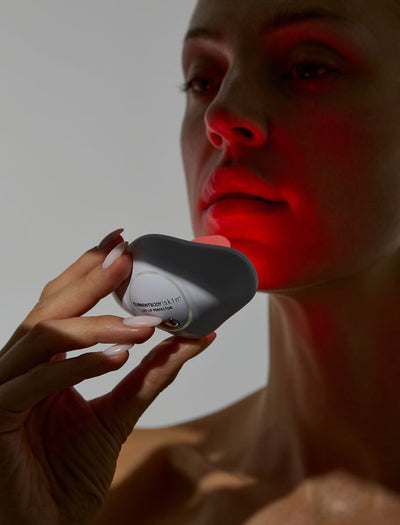Whether it's the warmer temps making you consider alternative hair removal options or just pure curiosity, we share our thoughts on at-home devices.
Until recently, you could only undergo laser hair removal treatments in a clinical or salon setting. A laser device — often a large and clunky bit of tech — is used to emit a single and concentrated wavelength of light to the area being treated, such as the bikini line. This light ultimately targets the melanin in the hair by creating heat that’s then absorbed, consequently damaging the follicle and preventing future hair growth.
Here, we work through exactly what you should consider before investing in a device for home use.
1) Ease of use
When you picture an in-clinic laser hair removal device, most people will imagine a massive machine with multiple cables, buttons and switches that are hard to interpret and attachments. The appeal of an at-home device on the other hand should therefore be the complete opposite — an ergonomic and intuitive design that’s easy to hold and use and settings that can be navigated and changed without complication.
2) Suitability for hair and skin types
When considering an at-home laser device, its ability to work with various skin tones, hair textures and colours is crucial. For most devices, hair texture is not an issue, however experts suggest that certain lasers aren't as effective on very fine hair.
As for anyone with darker skin, according to Dr. Idriss, “the two main types of laser that are best for people with darker skin tones are the Nd:YAG laser and the diode laser”, the latter of which CurrentBody's Skin Laser Hair Removal Device features, at a wavelength of 810nm. Moreover, it has a skin tone sensor, a feature ensuring your skin tone matches the conditions for safe and effective hair removal. That said, for anyone with darker skin or lighter hair, we always caution that it's best to consult a professional before beginning any at-home laser hair removal treatment.

3) Treatment time
The mark of an at-home laser device that’s worth your time and money is one with a large enough surface treatment area, allowing you to treat key areas such as the underarms, bikini line and legs in a fairly short amount of time.
One of the main reasons people avoid in-clinic laser hair removal is the treatment time, particularly as a session can take an hour or more. Today’s at-home devices on the other hand can take a fraction of the time, whilst still delivering an effective treatment. For instance, a full body treatment using the CurrentBody Skin Laser Hair Removal Device takes 15 minutes, and this is due to the large treatment area.
4) Convenience and safety
For most people, at-home laser hair removal is appealing for one reason — convenience. There’s nothing worse than a beauty gadget that stops half way through the treatment despite being fully charged when starting; how inconvenient is that? It therefore goes without saying that a reliable battery life is important, and you want a laser device that easy to charge.
When it comes to the actual hair removal, there are a few things to look out for when deciding on a device. Firstly, the flashes — the higher the total flashes a device provides across its lifetime, the longer it’s likely to last, giving you more bang for your buck.
Secondly, the best devices allow you to adjust the laser intensity depending on your body’s tolerance. This is ideal for beginners or the sensitive-skinned amongst us, as well as seasoned laser device users who are likely comfortable at higher levels. Also, your tolerance may be more or less depending on the area you're treating, and so it’s handy to use a lower setting on the bikini line and perhaps a higher one on the legs.
And thirdly it’s essential that you opt for a a device with in-built safety measures. Take the CurrentBody Skin Laser Hair Removal Device for example; in addition to its skin tone sensor, it also has an ice cooling technology to maintain low temperatures on the skin, because we've all experienced or at least have heard about the hot and snapping sensation that comes with laser hair removal.
Finally, another safety feature worth noting is a sensor which makes sure the device does not flash or emit pulses unless it’s making contact with your skin, otherwise you run the risk of both eye and skin damage.
Find out more:




